Whether you’re just thinking about riding, or if you’ve been riding for a few seasons and are ready to learn some advanced techniques for staying safe on the road, Women Riders Now has plenty of reading material for you in our Safe Riding Tips section.
For on-bike training, there are a number of classes available no matter what your skill level is. Beginners, inexperienced, self-taught, and less-confident riders should begin with the Motorcycle Safety Foundation (MSF) Basic RiderCourses (BRC, BRC2) or similar. For those who’ve mastered the BRC2 techniques on your own motorcycle, the MSF has developed another class just for you.
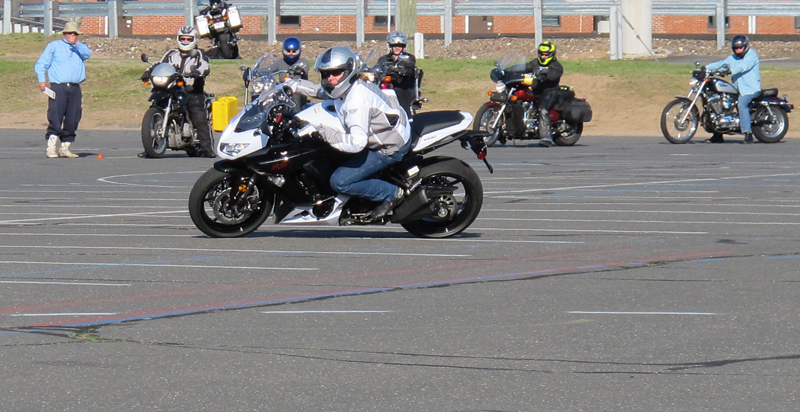
The one day, Advanced RiderCourse (ARC) is the public, modified version of the MSF Military Sportbike RiderCourse, which was developed when studies showed veterans and active military personnel were taking extreme risks on their motorcycles that were well above their riding skill level.
Modified to incorporate all kinds of motorcycles, you don’t need a sportbike to benefit from the ARC; the techniques and information taught can be applied to all kinds of street motorcycles, including cruisers and tourers.
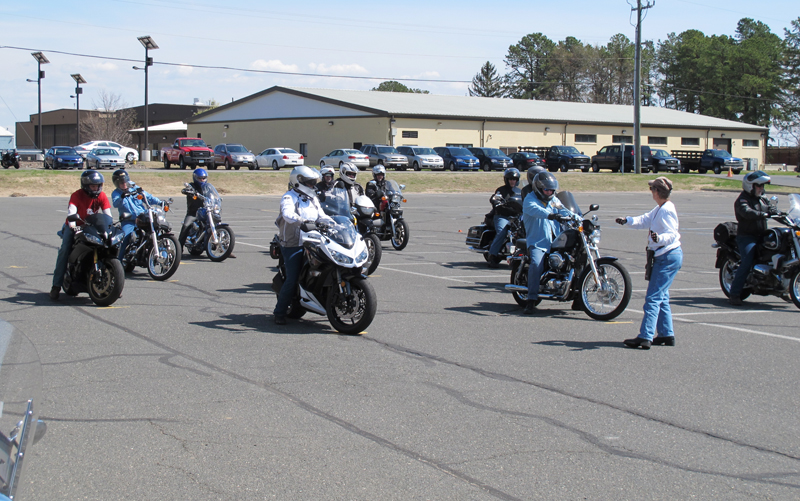
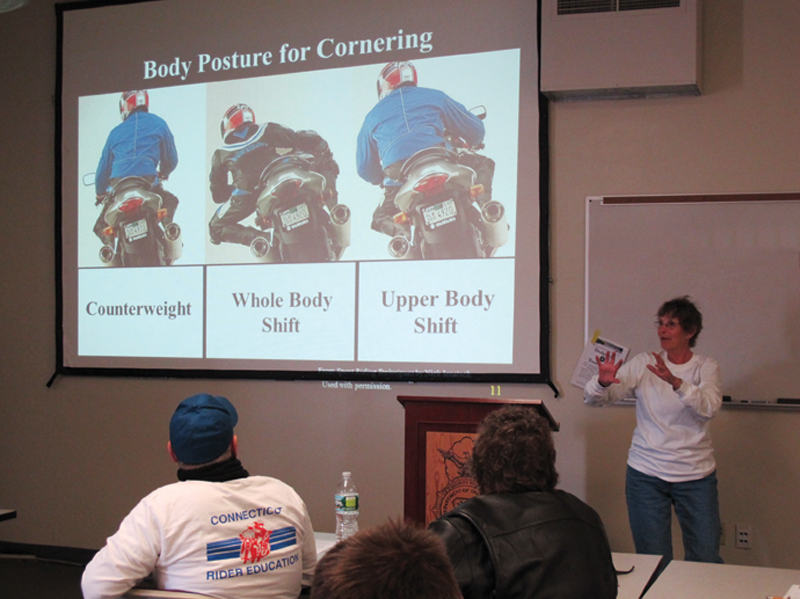
First, we completed a self-assessment and shared our findings with our classmates. Tallying up our sensation-seeking score, assessing our risk behaviors, riding skill level, how influenced we are from peer pressure, and a few other behaviors led into discussion about how risk factors combine to cause crashes. Since the ARC was developed, the BRC has been updated, and similar self-assessment lessons are now discussed there as well.
We then talked about cornering paths, delayed apex strategies, and about how shifting your weight affects available traction. Emphasis was given to bending forward and in (with the lean), as opposed to using a hang-off riding position, since this is a street riding class. Hanging off your motorcycle on the road is a good way to cause attention to the fact that you’re trying to ride extremely fast.
After cornering, we went into braking and swerving, and how to effectively manage your time and space restrictions. Understanding available traction, two-fingered trail braking, and again how shifting body weight affects traction were key points in the unit.
After the technique and physics lesson, the class focused on safety and risk, rider perception, rider behavior, and understanding our risk offset, circling back to first lesson of the day—self-assessment. The main point here is that so long as your skill level exceeds your risk-taking level, you will have an acceptable margin of safety.
the safer you will be.
After lunch, we were anxious to get out on our bikes and start the eight range exercises, which took the rest of the afternoon to complete. The Ninja was accompanied by another sportbike, a Yamaha R1, but all the other students’ bikes were cruisers, standards, and touring bikes. Mike demonstrated half of the exercises with his Suzuki GSX-R, while Barbara confirmed how smooth her Star V Star 1300 Tourer could complete the objectives of the other exercises.
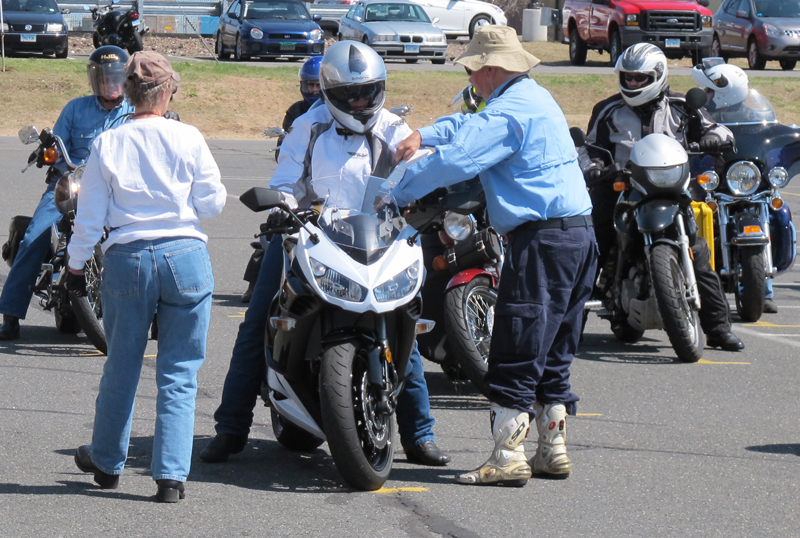
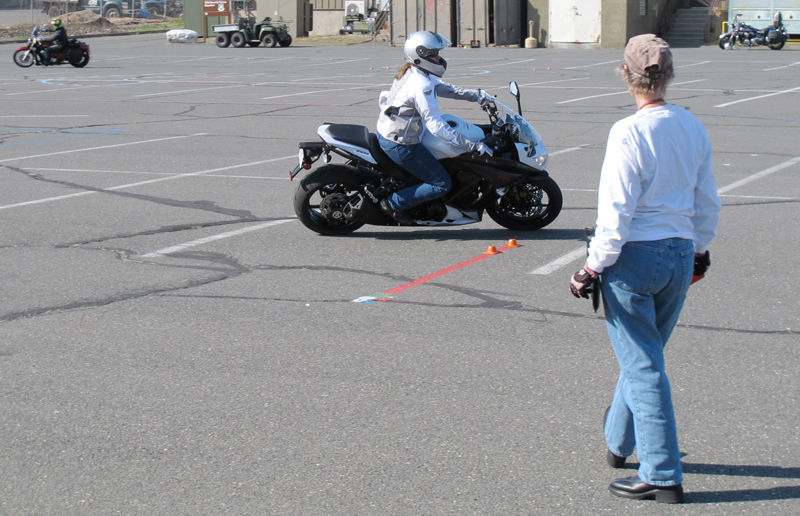
After our tires were warmed up, quick stops were next, similar to the ones we use in the BRCs. Only part two of the ARC exercise adds an “evade” lane to move over to after the quick stop.
The Ninja was equipped with ABS, and it felt like I was cheating, because I could squeeze and press the brakes as hard and fast as I could without an inkling of a skid. If you were wondering whether or not to spend the extra money on ABS when buying a new bike, do it!
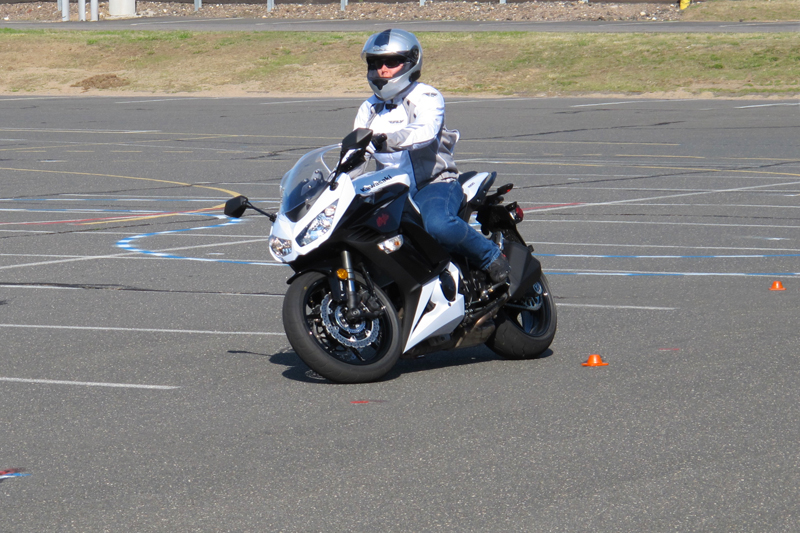
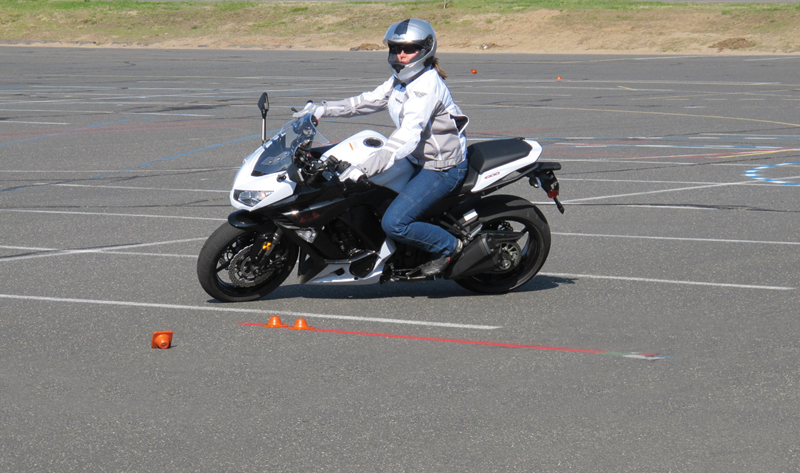
Next we watched Barbara stop her V Star quickly at a set speed, then do it again, adding a one second delay to her reaction time. This was designed to show us how much farther the bike will stop with just a moment’s hesitation. She repeated the demo again, this time going faster, which really extended the distance before getting the bike to stop safely. We didn’t practice this exercise; the visual demo was all we needed to understand the importance of SEEing (Search, Evaluate, Execute) as far ahead as possible. This is also an exercise that has become part of the new BRC’s updated curriculum.
The fourth exercise consisted of two circles, one small and one large. We practiced two styles of body positioning on both circles, then added a swerve to the smaller circle, and a braking point on the larger one. At the brake point, we practiced scrubbing off speed by using the two-fingered trail braking technique.
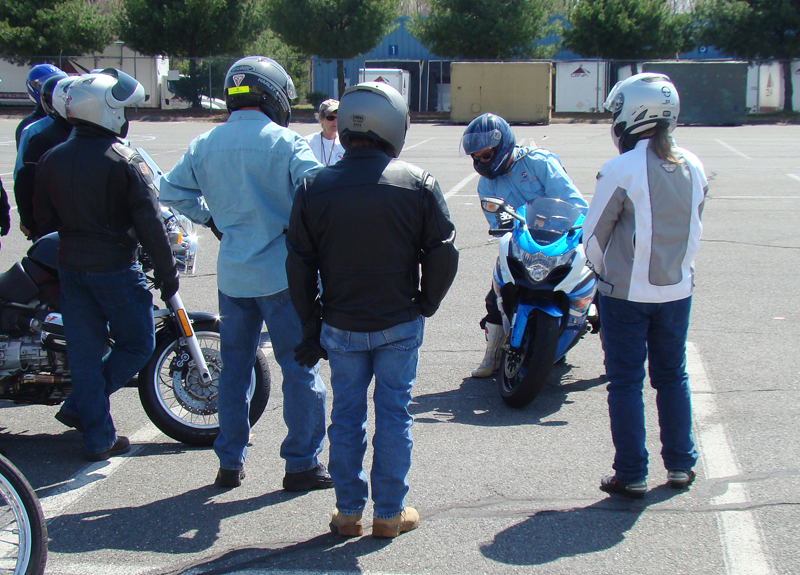
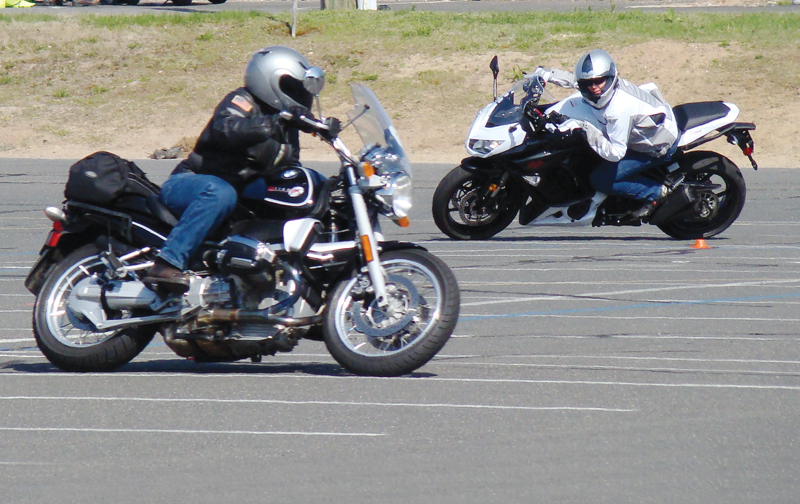
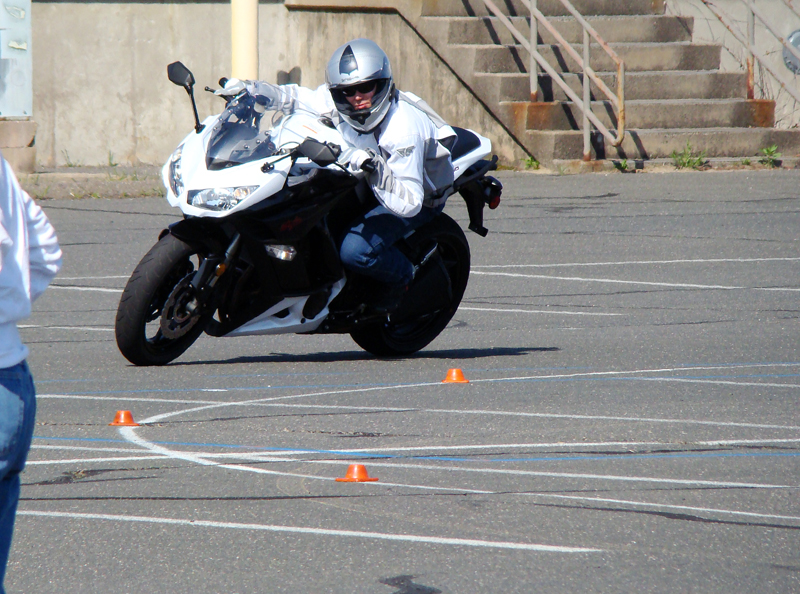
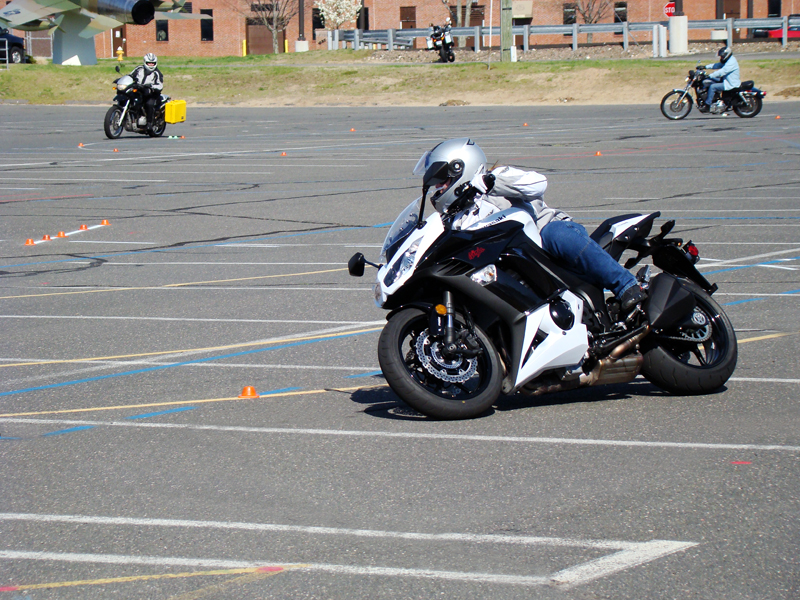
We continued to practice and build upon these skills for the remaining exercises. The next involved cornering and swerving, so that we’d learn to use each upper body position properly. Then, multiple curves reinforced the SEE strategy and provided more practice using the two body positions, smooth weight transfer, and overall control.
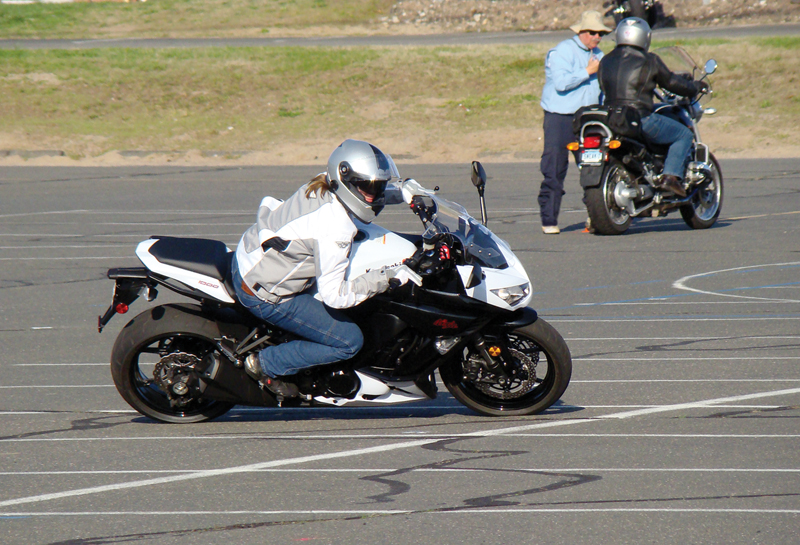
Our final exercise layout was a small oval on the inside of the range, surrounded by a large, perimeter circle. All the riders are sent out to ride both circles in the same direction at the same time, crossing over in the middle of the straightaway. It was a small slice of real-world mayhem, but actually was quite effective for riders trying to select safe gaps, and use signals before merging into traffic.
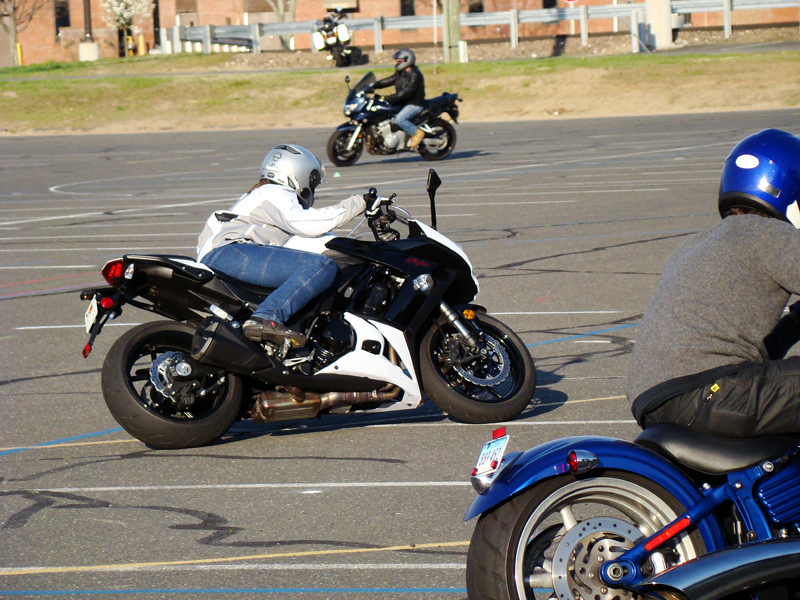
It was a long day, and my head has been swimming with all the information I took away from the ARC. Many of the techniques and lessons I already practice regularly, as all good MSF RiderCoaches do. But some were new or just reiterated, which made it well worth the sacrifice of just one day out of my life. After all, I may get that day, and many more back in return.
To find a class near you, visit msf-usa.org.
Related Articles
5 Ways to Avoid Crashing Your Motorcycle
Riding Right: Avoiding Hazards
More Riding Right articles


Take the advanced class
I took this course about three years after I got on the road as a very avid rider. (Lots of miles) It was fun but not easy! My turns and especially u-turns got much tighter and I felt a lot more confident after the course. I plan to do it again soon. Lots of my fellow riders have taken it multiple times. My local dealership holds classes and our HOG chapter fills up the course. Highly recommend!
I took this course last summer, and it was a blast. I plan to do it again this year as a refresher. Don’t be intimidated by it. If you already have plenty of real life riding experience, this will be easy.
This looks like a great class. I will have to see when and where one is available in Maryland. I would probably take it on my GSXR 750 because that bike is more difficult at low speeds and I could use any and all tips to control it better there (I usually have to get very creative when parking it because the little bugger doesn’t have much of a turning radius).
Hi Katherine,I would recommend the BRC2 for you, to get more practice with low-speed maneuvers. The ARC focuses a bit more on real-life situations and how to handle your bike at real road speeds. The BRC2 is also a one-day course that will cover more low-speed maneuvering with you on your bike.Both classes are great, though. I recommend taking both!